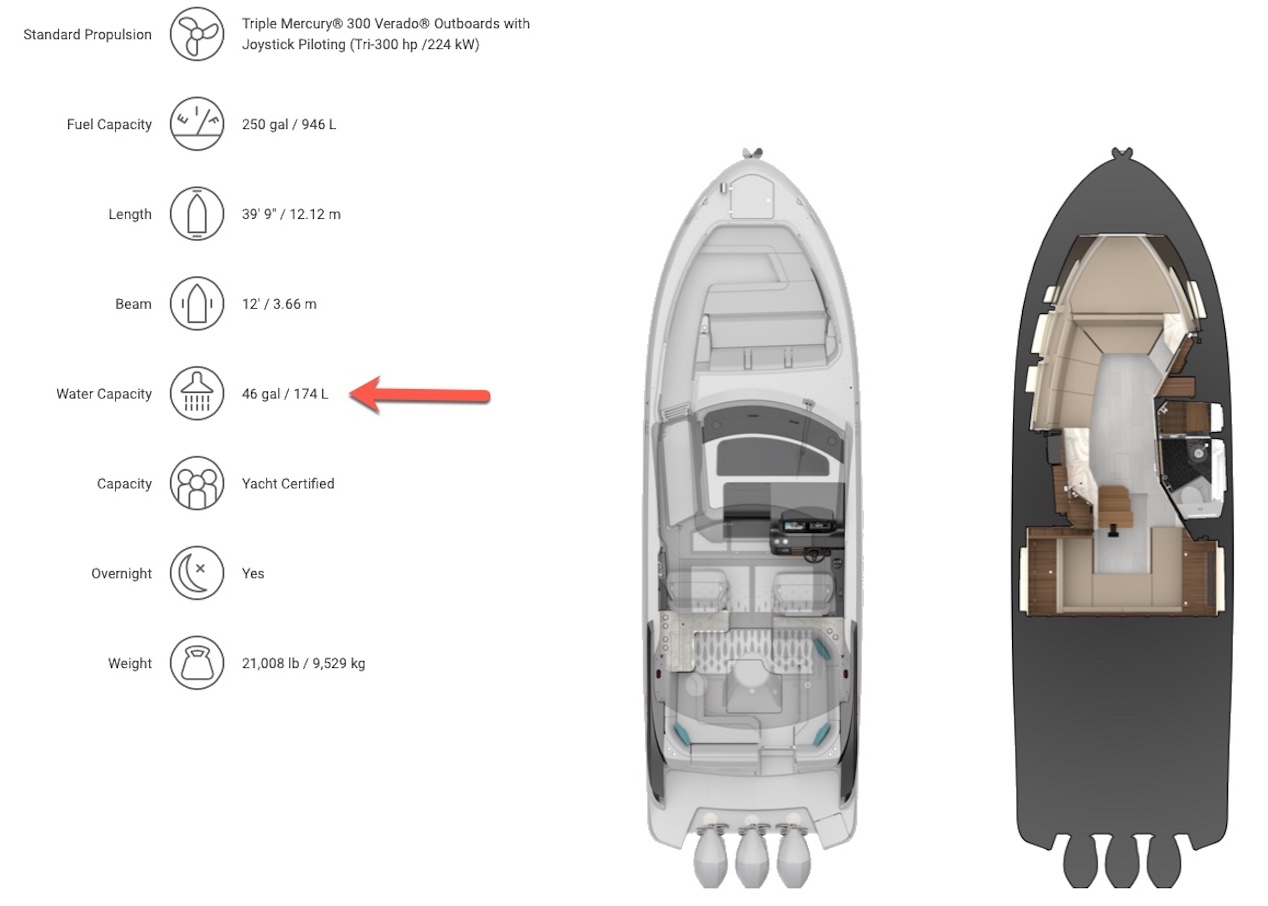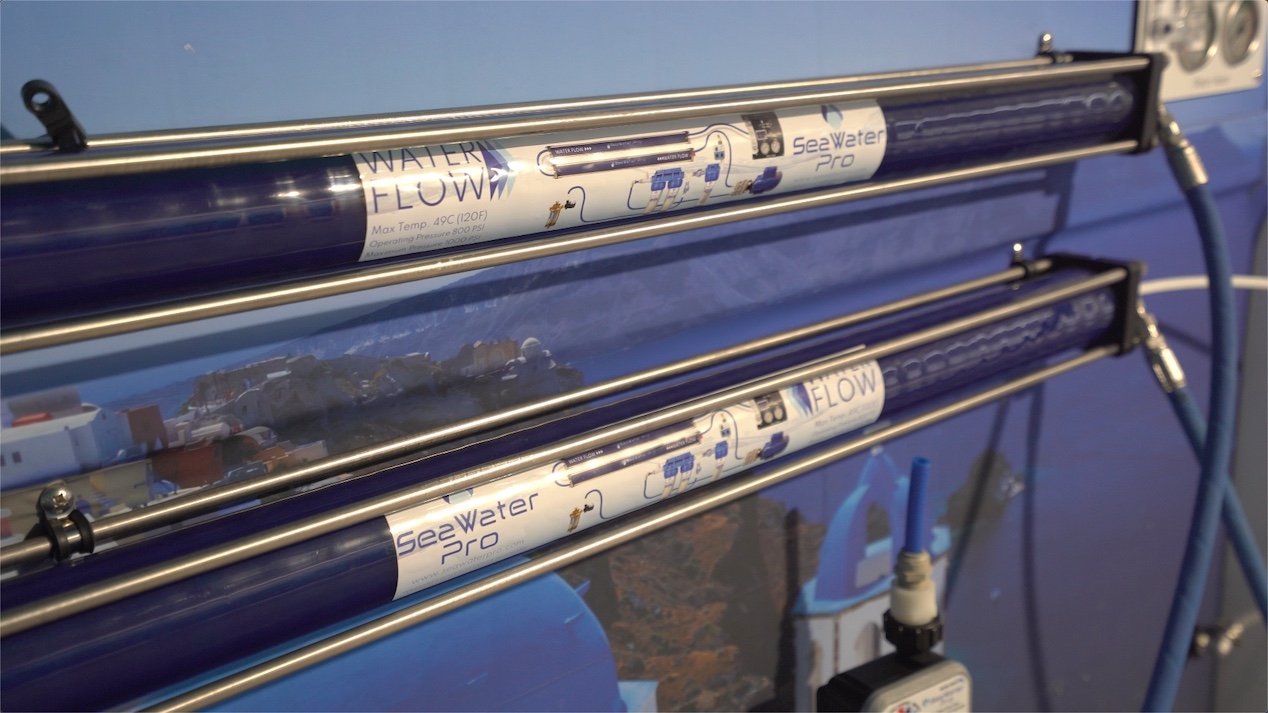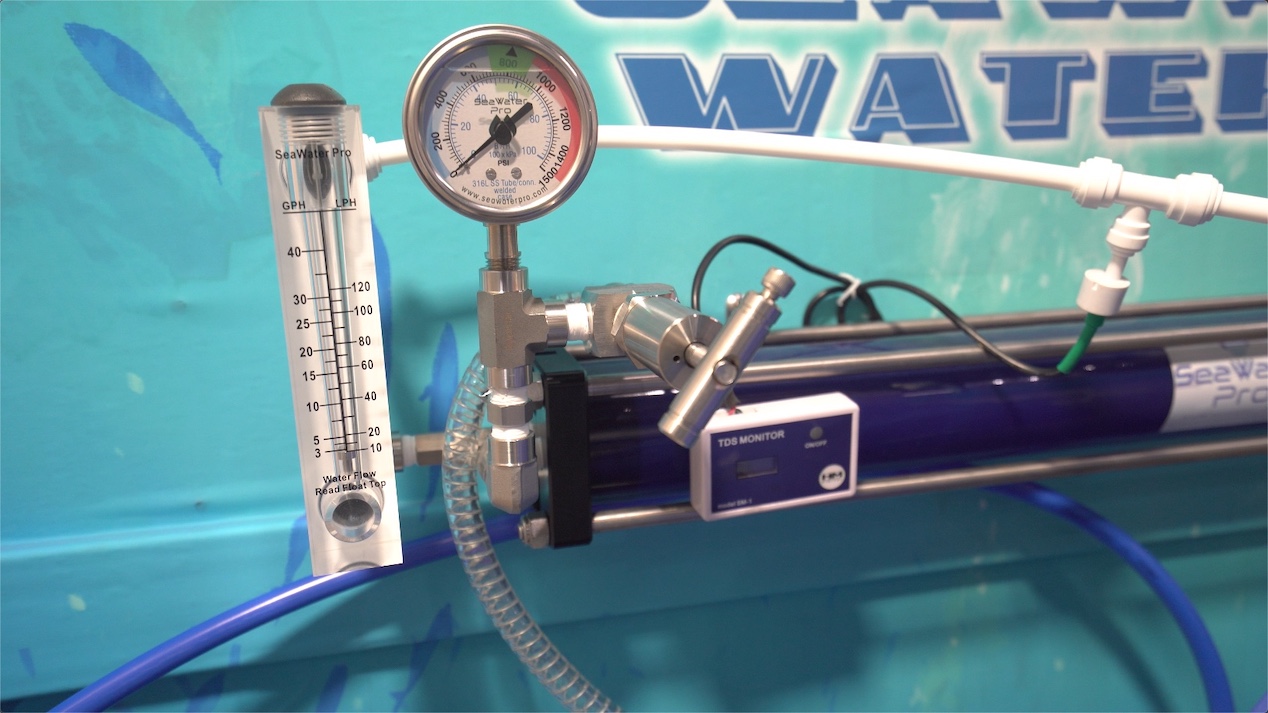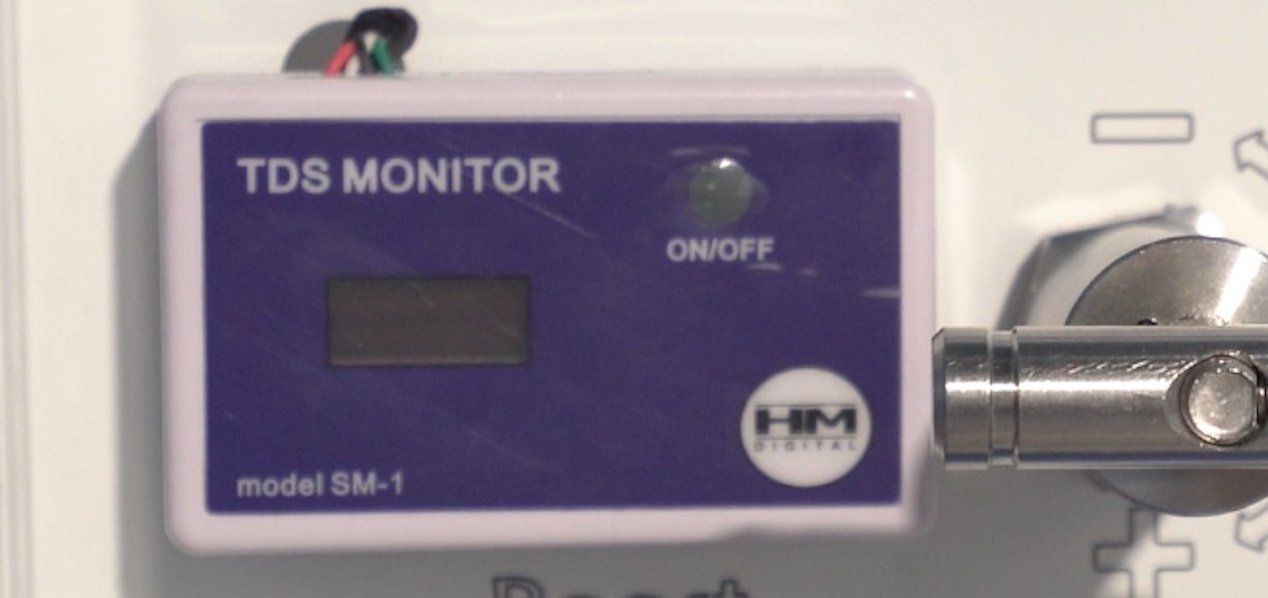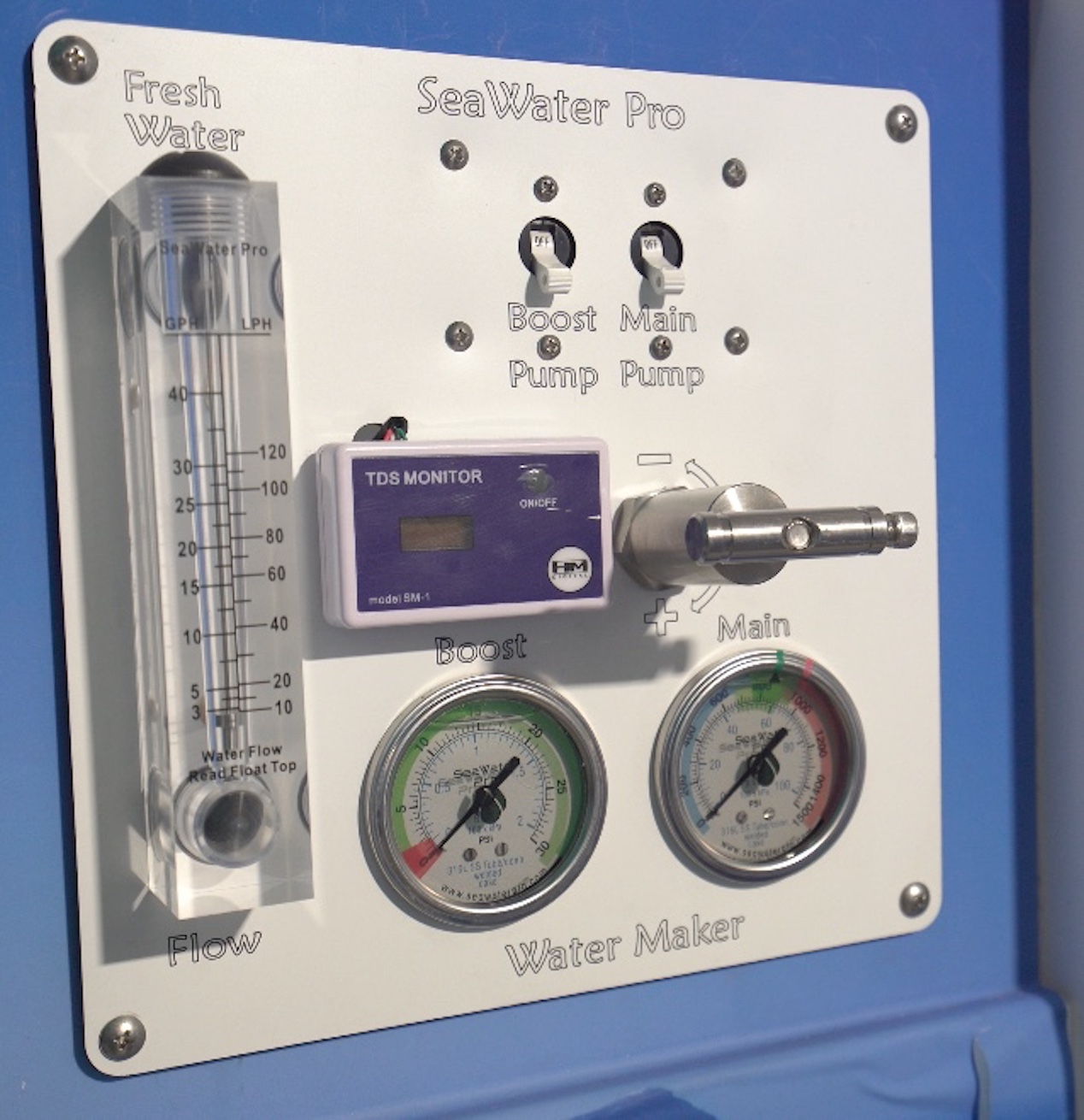SeaWater Pro Watermaker
SeaWater Pro Water Maker
Captain’s Report by Capt. Steve
Is there such a thing called “water envy?” Where those large yachts have those watermakers that provide an endless supply of water to the tanks, but our smaller weekenders must be at the mercy of whatever we can manage to carry aboard. Or worse… hope that there’s a garden hose at the other end of our trip. And then, we end up with water that tastes like A) that garden hose or B) the putrid water tank.
Well, it doesn’t have to be that way anymore. SeaWater Pro is a company in Fort Lauderdale, Florida that took a stand and said, “this ends today” and did something about it. Now, owners of “less than yacht quality” boats can have an actual watermaker that doesn’t cost the typical $20,000 and it can be installed by the owner! Interested? We certainly were when we first saw them.
Now let’s be clear.
There’s a big difference between a yacht watermaker and what we’re talking about here. The pricier models on a typical battlewagon can pump out upwards of 2,200 gallons (8,327.91 L) per day and may even include a 7” (17.78 cm) touchscreen display for controlling the units. They’ll also come with things like automatic freshwater flush, a 316 stainless-steel high-pressure pump, high-rejection membranes, 316 stainless-steel flow and pressure components and a totally fan-cooled motor with thermal protection.
Do you need all that on your boat that has a tank that may only hold 46 gallons (174.13 L)? Of course not. That’s why the SeaWater Pro models that pump out 20 to 40 gallons (75.7 to151 L) per hour are such a good fit for our day boats.
The Components
The beauty of these systems is in the simplicity of the components. Nearly all of them are available practically anywhere, so being in a remote location in something like the Turks and Caicos and having to replace a filter is not going to be a cause for concern. In fact, the only proprietary part is the pressure regulator and that’s not a part that’s likely to fail… ever. So, let’s go over the components.
Pumps
First off, let’s be clear that SeaWater Pro doesn’t build every component and the pumps are no exception. These pumps are made by Leeson, an American Company with a huge reliability factor. These are pumps that have been in the field for more than five years and they are showing no signs of slowing down because SeaWater Pro uses oversized pumps — so they’re not overworking them. The 12V pumps are capable of 80-amps — they use them at 60-amps. That’s 600-watts making 20 gph. The 24V and 48V systems are capable of 900-watts and 40 gph.
Membranes
This is the heart of the watermaker. It’s reverse osmosis. Water is forced through a membrane that filters out all the impurities, like salt, and leaves behind fresh drinkable water. First thing's first, the 12V systems are limited to a single membrane — that’s what’s inside the long blue tube. That’s because SeaWater Pro just doesn’t want to run the pump at 100%. And frankly, boats that would require more capacity than the 20 gph of the DC system would likely have generator capability anyway, so dual membrane systems will be AC only or at least 24 or 48-volt that can carry the larger pumps and motors. Then they get dual membranes. So, in a nutshell, if you see one blue tube — 20 gph; two blue tubes — 40 gph.
Pressure Regulators
Now here’s a very important component that we see missing even on some of the larger models. If air gets into the system, say from jumping over a wave, that air bubble will get transferred through the hoses and into the membranes at high pressure. Without a pressure regulator to absorb that subsequent “hammer effect” of the water shooting in behind that air pocket, the cheap white membrane housing will burst.
SeaWater Pro uses a high-pressure regulator to absorb that shock and high-pressure membrane housings with four stainless-steel rods running down the length. In other words, they don’t want to hear from you that there was a burst membrane while you’re in a remote location with no replacement parts. So, let’s make it stronger and fail-proof at the outset. Sounds reasonable to us.
TDS Gauge
Total Dissolved Solids is the measurement of choice to determine how healthy our drinking water is. It’s basically a measurement of anything dissolved in water that is not a water molecule. This could be organic or inorganic such as metals, minerals, ions, calcium, chloride and of course… salt, among many others. The list is long.
So, we stick a probe in the filtered water and come up with a measurement in ppm, or parts per million. Five hundred is the maximum for drinking water, 1,000 is unsafe and 2,000 is beyond the capabilities of filtration systems.
When I tested SeaWater Pro’s system in the New River in Ft. Lauderdale, right across from an outfall pipe, I filled a cup of water and inserted a TDS gauge. It came in at 125. That’s pretty darn clean water. And…. I drank it.
Flow Gauge
This is the white vertical gauge that goes on the end of the discharge line. It is marked off in GPH on one side and LPH on the other. A little float inside rises to the occasion and all it takes is a glance to see the level of output.
Remote Panel
A remote panel is available that has the control switches, the pressure regulator, the pressure gauges and the TDS gauge all in one and it can be mounted anywhere on the boat. It’s available in white, black, graphite and teak and all are made in the company’s Ft. Lauderdale facility… not outsourced. So, the question now becomes — do I need it on my boat?
Well, are your watermaker components easily accessible? Can you get to the pressure regulator easily enough? Can you inspect and adjust the pressure easily? Can you check the TDS analyzer and the water flow gauge? If the answer to these questions is no, then get the remote panel. If the answer is yes, then save the $750 and don’t bother. All the components can bolt right onto the end of the membrane and be accessed that way. Personally, after buying a boat, $750 is short money and I’d buy the remote panel just for the bragging rights of having everyone see it so I can say my 28’ (8.5 m) boat has a watermaker.
Pricing
Prices for the SeaWater Pro systems start at:
- $3,495 for the 12-V 20-GPH system
- $3,995 for the 24-V 40 GPH system
- $2,995 for the 110-220-V 20-GPH system
- $3,495 for the 110-220-V 40-GPH system
Options to Consider
- Remote Panel: $750
- Stainless Steel Pump: $500
Observations
Obviously, the SeaWater Pro systems aren’t for everyone. But truth be told, not everyone needs, or can accommodate, a watermaker that can put out 2,200 gallons (8,328 L) a day. But there are a huge number of smaller boats that sure could use a watermaker that puts out just enough to fill that water tank every couple of hours when the kids are showering off after swimming, the guests keep making ice, the coffeemaker keeps cranking out the morning cups, the showers before heading out to dinner… the lists of how quickly that water supply gets depleted is surprisingly long. Now flip a switch, sit back and relax. SeaWater Pro has it covered. And feel free to add extra ice to that drink. No one will care.

